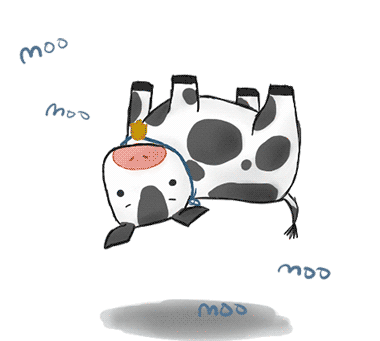| Line 56: | Line 56: | ||
$$ | $$ | ||
<p class='large'>Where \(\text{kf[ ]}\) denotes a forward rate parameter, and \(\text{[ ]}\) denotes concentration of a substance</p> | <p class='large'>Where \(\text{kf[ ]}\) denotes a forward rate parameter, and \(\text{[ ]}\) denotes concentration of a substance</p> | ||
| + | |||
| + | <h2>Solutions to the Ordinary Differential Equations:</h2> | ||
| + | |||
| + | <p class='large'> | ||
| + | This system of 7 differential equations does not have an analytical solution, so we needed to implement some numerical methods. We used the 4th order Runge-Kutta method implemented in Python, and the Stochastic Simulation Algorithm in MatLab to approximate the solution to these ODE's. | ||
| + | </p> | ||
| + | |||
| + | <h3>Numerical Solution: 4th order Runge-Kutta method, no initial Tetracycline Solution in the system:</h3> | ||
| + | |||
| + | <img src='https://static.igem.org/mediawiki/2017/8/85/T--UCC_Ireland--plot_0_tet.png' style='display: block; max-width: 60%; margin: auto;'></img> | ||
| + | |||
| + | |||
| + | |||
| + | |||
| + | |||
| + | </div> | ||
| + | </body> | ||
| + | </html> | ||
| + | |||
| + | {{UCC_Ireland/Footer}} | ||
Revision as of 01:26, 2 November 2017

Why Mathematical Modelling?
We decided to use Mathematical Modelling in order to get a better understanding of what was going on in our BioSensor, without conducting a large amount of experiments, which would have been both costly, and time inefficient.
Mathematical modelling allowed us to find out what exactly was going on in our system, such as what concentration of each substance was present at certain time points.
What were we modelling?
We wanted to quantify the readout of our BioSensor, so naturally the AmilCP quantity was essential to predict. We wanted to be able to estimate how much AmilCP would be produced in our system depending on a set of initial conditions: mainly the amount of Tetracycline Solution in the system.
How did we model it?
Using the SimBiology toolkit in MATLAB, we created a diagram of the chemical reactions occuring in our BioSensor.

The SimBiology toolkit then generates a system of Ordinary Differential Equations using the parameters and rate constants provided in the diagram. This was an invaluable tool in the modelling process, and really made modelling the system a lot easier and less painful than it would be otherwise, seeing as we ended up with a system of seven ODE's!
Ordinary Differential Equations Obtained:
$$ \begin{align} \frac{d[\text{TetR mRNA}]}{dt} &= -\text{kf[TetR Translation]}*[\text{TetR mRNA}] \\ &+ \text{kf[Constant Transcription]} \\ \frac{d[\text{TetR}]}{dt} &= \text{kf[TetR Translation]}*[\text{TetR mRNA}] \\ &- \text{kf[Association w/ Promoter]}*[\text{TetR}] \\ \frac{d[\text{TetR Complex}]}{dt} &= \text{kf[Association w/ Promoter]}*[\text{TetR}] \\ &- \text{kf[DNA Dissociation]}*[\text{TetR Complex}] \\ &+ \text{kf[Diffusion]}*[\text{Tetracycline Solution}] \\ \frac{d[\text{Free AmilCP Operon}]}{dt} &= \text{kf[DNA Dissociation]}*[\text{TetR Complex}] \\ &- \text{kf[Transcription]}*[\text{Free AmilCP Operon}] \\ \frac{d[\text{AmilCP mRNA}]}{dt} &= \text{kf[Transcription]}*[\text{Free AmilCP Operon}] \\ &- \text{kf[AmilCP mRNA Translation]}*[\text{AmilCP mRNA}]\\ &- \text{kf[mRNA Degredation]}*[\text{AmilCP mRNA}] \\ \frac{d[\text{AmilCP Protein}]}{dt} &= \text{kf[AmilCP mRNA Translation]}*[\text{AmilCP mRNA}] \\ &- \text{kf[Protein Degredation]}*[\text{AmilCP Protein}] \\ \frac{d[\text{Tetracycline Solution}]}{dt} &= -\text{kf[Diffusion]}*[\text{Tetracycline Solution}] \end{align} $$Where \(\text{kf[ ]}\) denotes a forward rate parameter, and \(\text{[ ]}\) denotes concentration of a substance
Solutions to the Ordinary Differential Equations:
This system of 7 differential equations does not have an analytical solution, so we needed to implement some numerical methods. We used the 4th order Runge-Kutta method implemented in Python, and the Stochastic Simulation Algorithm in MatLab to approximate the solution to these ODE's.
Numerical Solution: 4th order Runge-Kutta method, no initial Tetracycline Solution in the system:












